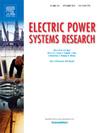Leveraging battery storage to provide green inertia in DC microgrids: Innovative grid-forming converter strategies
IF 3.3
3区 工程技术
Q2 ENGINEERING, ELECTRICAL & ELECTRONIC
引用次数: 0
Abstract
DC microgrids are at the cutting edge of power industry innovation, offering unparalleled efficiency and integration potential for modern energy systems. Despite their advantages, the critical challenge of the lack of inherent inertia persists, compromising system stability. An innovative and essential sustainability solution, green inertia, has been introduced to address this issue. By leveraging grid-forming converters and simulating the properties of rotating masses, this idea allows modern grids to move away from fossil fuels towards a more sustainable future without compromising sustainability. This study introduces the application of green inertia within four state-of-the-art grid-forming DC-DC converters designed for battery integration. These include the Buck-Boost (BUBO), Single- and Three-phase Dual Active Bridge (DAB and ThPh-DAB), and the Dual Active Half-Bridge (DAHB). Leveraging the Virtual Compound DC Machine (VCDCM), this research introduces novel inertia emulation techniques, marking the first implementation of VCDCM in DAB, ThPh-DAB, and DAHB converters. Extensive simulations highlight the effectiveness of these converters in stabilizing DC microgrid performance while balancing technical efficiency and cost-effectiveness. This work redefines the role of grid-forming converters and sets a foundational framework for next-generation DC microgrids, paving the way for resilient and adaptive power systems.
求助全文
约1分钟内获得全文
求助全文
来源期刊

Electric Power Systems Research
工程技术-工程:电子与电气
CiteScore
7.50
自引率
17.90%
发文量
963
审稿时长
3.8 months
期刊介绍:
Electric Power Systems Research is an international medium for the publication of original papers concerned with the generation, transmission, distribution and utilization of electrical energy. The journal aims at presenting important results of work in this field, whether in the form of applied research, development of new procedures or components, orginal application of existing knowledge or new designapproaches. The scope of Electric Power Systems Research is broad, encompassing all aspects of electric power systems. The following list of topics is not intended to be exhaustive, but rather to indicate topics that fall within the journal purview.
• Generation techniques ranging from advances in conventional electromechanical methods, through nuclear power generation, to renewable energy generation.
• Transmission, spanning the broad area from UHV (ac and dc) to network operation and protection, line routing and design.
• Substation work: equipment design, protection and control systems.
• Distribution techniques, equipment development, and smart grids.
• The utilization area from energy efficiency to distributed load levelling techniques.
• Systems studies including control techniques, planning, optimization methods, stability, security assessment and insulation coordination.
 求助内容:
求助内容: 应助结果提醒方式:
应助结果提醒方式:


